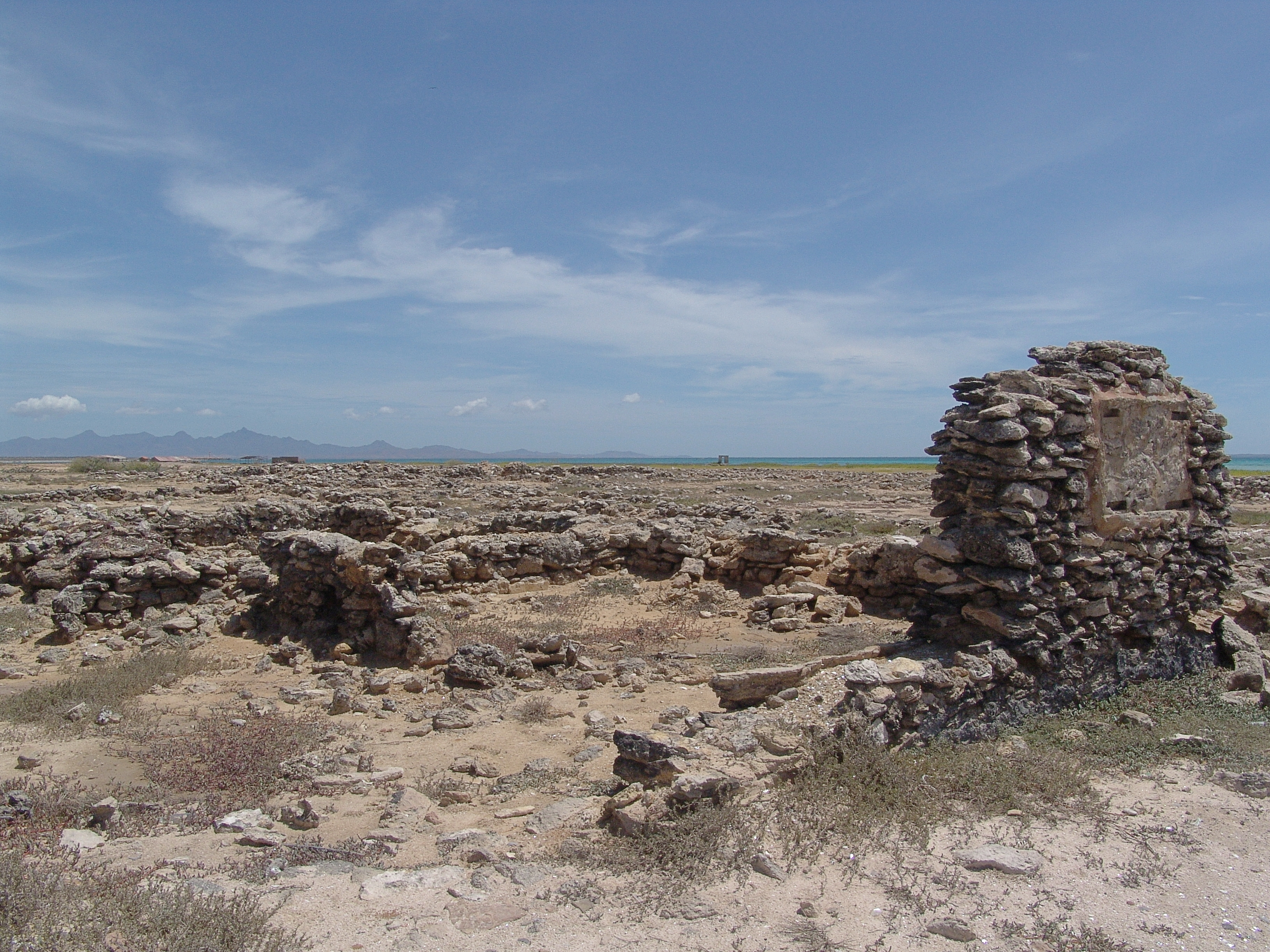Nueva Cádiz on:
[Wikipedia]
[Google]
[Amazon]
''
 Nueva Cádiz is an archaeological site and former
Nueva Cádiz is an archaeological site and former

 Nueva Cádiz is an archaeological site and former
Nueva Cádiz is an archaeological site and former port town
A port is a maritime facility comprising one or more wharves or loading areas, where ships load and discharge cargo and passengers. Although usually situated on a sea coast or estuary, ports can also be found far inland, such as H ...
on Cubagua, off the coast of Venezuela
Venezuela (; ), officially the Bolivarian Republic of Venezuela ( es, link=no, República Bolivariana de Venezuela), is a country on the northern coast of South America, consisting of a continental landmass and many islands and islets in th ...
. First established in 1500 as a seasonal settlement, by 1515 it had become a year-round permanent town. it was one of the first European settlements in the Americas. The settlement was given the name Nueva Cádiz when it was incorporated as a city in 1528.
History
As early as 1502, rancherías were established on Cubagua, occupied for 3–4 months each year during trading. The island was of particular interest because of its richpearl oyster
''Pinctada'' is a genus of saltwater oysters, marine bivalve mollusks in the family Pteriidae. These pearl oysters have a strong inner shell layer composed of nacre, also known as "mother of pearl".
Pearl oysters are not closely related to e ...
beds. Eventually, the settlement became permanent and, by 1520, after the great Indian uprising, its resident population surpassed 300. On September 12, 1528 by a royal decree issued by Charles V, Nueva Cádiz was incorporated and became a city named Nueva Cádiz. It became the first Spanish town in South America
South America is a continent entirely in the Western Hemisphere and mostly in the Southern Hemisphere, with a relatively small portion in the Northern Hemisphere at the northern tip of the continent. It can also be described as the sou ...
.
By 1530 Nueva Cádiz had a population of 223 Europeans and 700 natives. At its peak (around 1535), it had over 1500 people. The depletion of the pearl
A pearl is a hard, glistening object produced within the soft tissue (specifically the mantle) of a living shelled mollusk or another animal, such as fossil conulariids. Just like the shell of a mollusk, a pearl is composed of calcium carb ...
oyster beds, however, became increasingly acute, causing the Spaniards to limit pearl production. In combination with the discovery of new pearl oyster beds on the Guajira Peninsula
The Guajira Peninsula ( es, Península de La Guajira, links=no, also spelled ''Goajira'', mainly in colonial period texts, guc, Hikükariby) is a peninsula in northern Colombia and northwestern Venezuela in the Caribbean. It is the northe ...
, this led to a decline of Nueva Cádiz. By 1539 there were less than 50 people left on Cubagua. After a hurricane destroyed the remaining buildings in 1541, the colony was completely abandoned.
The ruins, which are partly submerged beneath the sea, were declared a National Monument of Venezuela in 1979. In the 1950s and 1960s the area was examined by José María Cruxent who published works such as ''Nueva Cádiz, testimonio de piedra'' (1955) and ''Cubagua y el poblamiento oriental de Venezuela en las comienzos'' (1961) on Nueva Cádiz. The Museo de Nueva Cádiz in La Asunción
La Asunción () is a city in Venezuela. The capital of Nueva Esparta state (made up of three islands), it lies on Margarita Island in the Caribbean Sea, off the South American mainland. It is inland from Porlamar and is in a genuine colonial sett ...
contains relics unearthed at this site.
In popular culture
In 2015 Venezuelan director Jorge Thielen Armand made a short documentary about the ruins of Nueva Cádiz and the island of Cubagua, Flor de la Mar.http://www.flordelamarfilm.comSee also
* La Isabela *Roanoke Colony
The establishment of the Roanoke Colony ( ) was an attempt by Sir Walter Raleigh to found the first permanent English settlement in North America. The English, led by Sir Humphrey Gilbert, had briefly claimed St. John's, Newfoundland, in ...
References
Further reading
* * {{DEFAULTSORT:Nueva Cadiz Former Spanish colonies History of Venezuela Populated places established in 1500 Archaeological sites in Venezuela Monuments and memorials in Venezuela Ruins in Venezuela Buildings and structures in Nueva Esparta 1515 establishments in the Spanish Empire